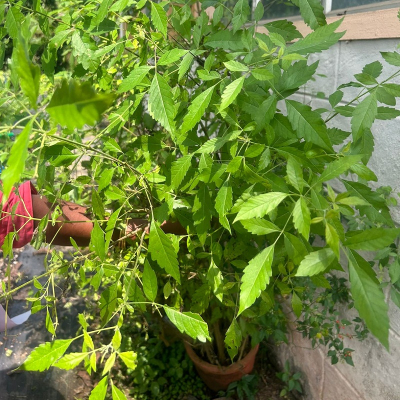Distribution and habitat: Found throughout India.
Botany: An aromatic shrub with smooth, pale, grey bark.
- Leaves: Simple to trifoliate, the terminal leaflets sessile, the lateral ones smaller and sessile, all glabrous above and white tomentose beneath.
- Flowers: Light blue or purple in terminal panicled cymes.
- Fruits: Globose drupes, purplish black when ripe.
Properties: The roots are bitter, thermogenic, astringent, trichogenous, ophthalmic, anthelmintic, anodyne, anti-inflammatory, expectorant, emmenagogue, depurative and caraminative.
Chemical constituents: Friedelin, β-sitosterol
Formulations: Vacadi tailam, Rasnadi tailam
Uses:
- Root is used in cephalalgia, otalgia, painful inflammations, cough, bronchitis, leprosy, skin diseases, dyspepsia, colic, verminosis, ophthalmopathy and fever.
- Leaves used in cephalalgia, inflammations, loss of memory, hair loss, leucoderma, cough, bronchitis, fever, splenomegaly, tuberculosis, arthralgia, anticancerous.
- Flowers used in fever.
- Fruits used in amenorrhoea
Propagation: Cuttings. Tip and middle portion of stem have 15-20cm length and 3-4 buds are used, 2 month old cuttings are planted at a spacing of 1.5m x 1.5m

